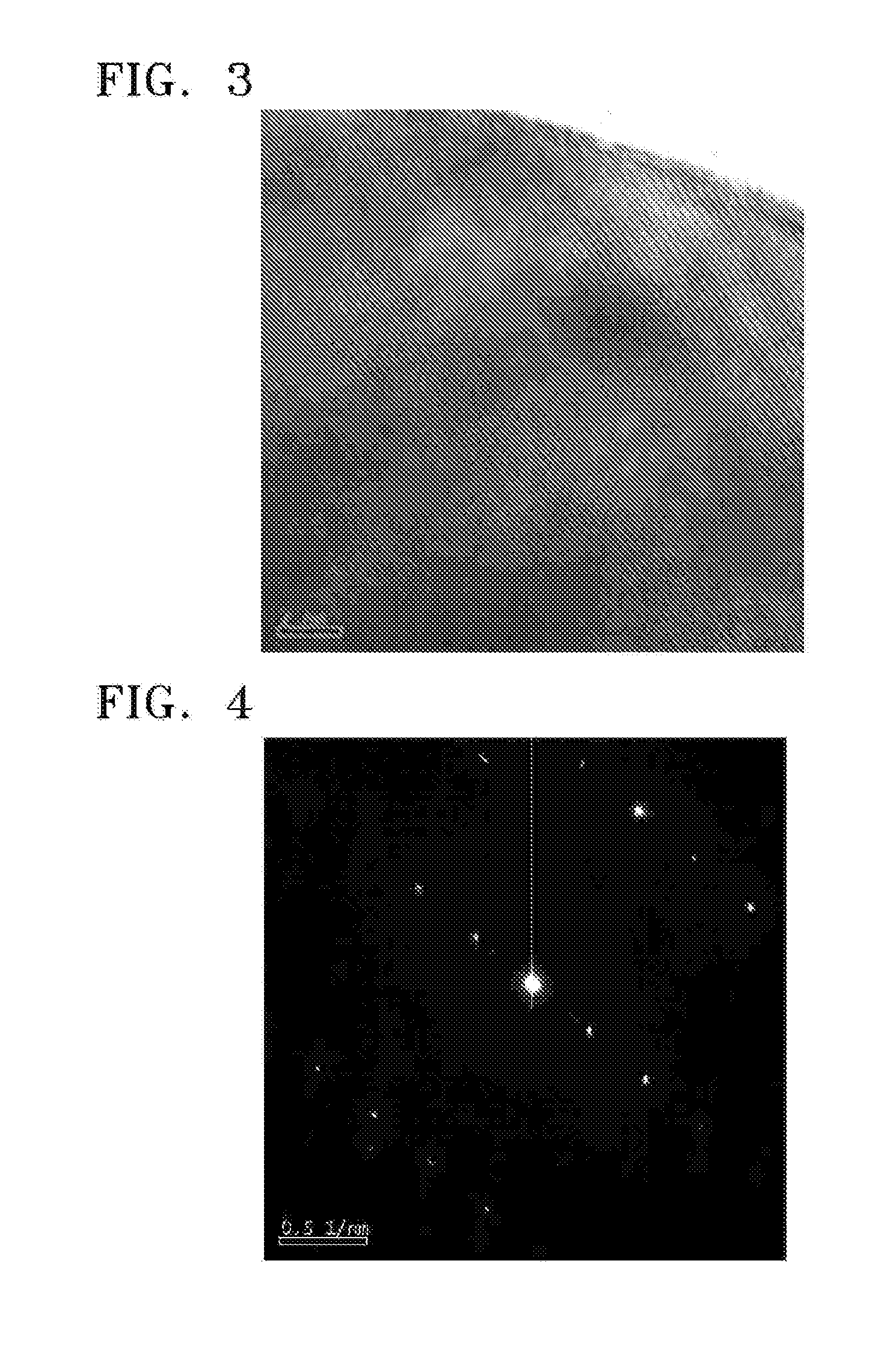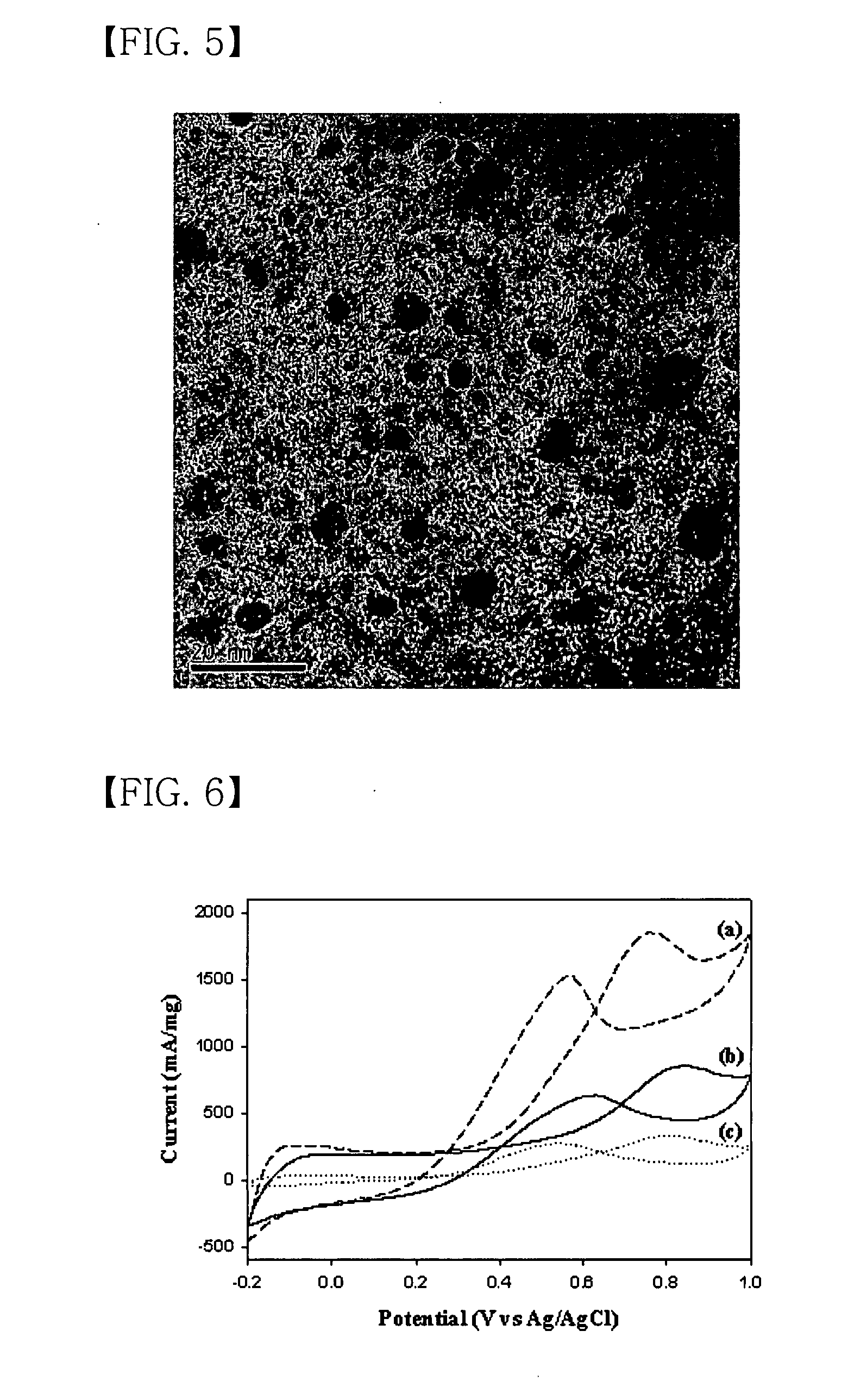Nanoporous tungsten carbide catalyst and preparation method thereof
- Summary
- Abstract
- Description
- Claims
- Application Information
AI Technical Summary
Benefits of technology
Problems solved by technology
Method used
Image
Examples
example 1
[0073] To prepare an aqueous solution, cetyltrimethylammonium bromide (CTABr) as a surfactant was dissolved in water. In addition, 5 g of ammonium meta tungstate was dissolved in water, and then the solution was transferred to a mixed solution of 1.2 g of resorcinol and 1.8 mL formaldehyde while being stirred to provide homogenous dispersion.
[0074] The resultant solution was loaded in a high-pressure reactor, followed by being subjected to hydrothermal synthesis at 150° C. for 2 days, giving a reaction solid. The reaction solid was filtered and dried at 110° C. for one day. The dried reaction product was heated in an inert gas atmosphere at 900° C. for one hour and then further heated in a hydrogen atmosphere for 2 hours, thereby preparing a tungsten carbide catalyst.
[0075] X-ray diffraction (XRD) analysis of the thus prepared tungsten carbide catalyst was carried out using a transmission electron microscope (TEM) manufactured by Philips (CM-200 model) operated at 200 kV. As shown...
example 2
[0080] 0.29 g of NaOH was dissolved in 25 mL distilled water, 0.64 g of NaBH4 was further dissolved in the solution, and 0.6 g of the porous tungsten carbide catalyst prepared in Example 1 was added to the resultant solution, then the solution was stirred well to provide good dispersion. Thereafter, 1 mL of H2PtCl6 was further added to the resultant dispersion and stirred for about 30 minutes, then the solution was centrifuged and dried, thereby preparing a 7.5% platinum (Pt)-tungsten carbide catalyst.
[0081] The prepared Pt / tungsten carbide catalyst was evaluated by nitrogen adsorption / desorption isotherms, high resolution transmission electron microscopy (HRTEM), and selected area electron diffraction (SAED) analysis.
[0082] The analyzed results showed that the Pt-supported catalyst was substantially the same as the tungsten carbide catalyst prepared in Example 1.
example 3
[0083] A Pt / tungsten carbide catalyst was prepared using the same method as in Example 2, except that 0.47 mL, instead of 1 mL, of H2PtCl6 was added to the solution.
[0084]FIG. 5 is a high resolution transmission electron microscopy (HRTEM) image of the nanoporous Pt / tungsten carbide catalyst prepared in Example 3 according to an embodiment of the present invention. As shown in FIG. 5, Pt particles supported on the nanoporous Pt / tungsten carbide catalyst are well dispersed therein, and the average particle size thereof is about 2 nm.
PUM
| Property | Measurement | Unit |
|---|---|---|
| Temperature | aaaaa | aaaaa |
| Temperature | aaaaa | aaaaa |
| Length | aaaaa | aaaaa |
Abstract
Description
Claims
Application Information
 Login to View More
Login to View More - R&D
- Intellectual Property
- Life Sciences
- Materials
- Tech Scout
- Unparalleled Data Quality
- Higher Quality Content
- 60% Fewer Hallucinations
Browse by: Latest US Patents, China's latest patents, Technical Efficacy Thesaurus, Application Domain, Technology Topic, Popular Technical Reports.
© 2025 PatSnap. All rights reserved.Legal|Privacy policy|Modern Slavery Act Transparency Statement|Sitemap|About US| Contact US: help@patsnap.com



